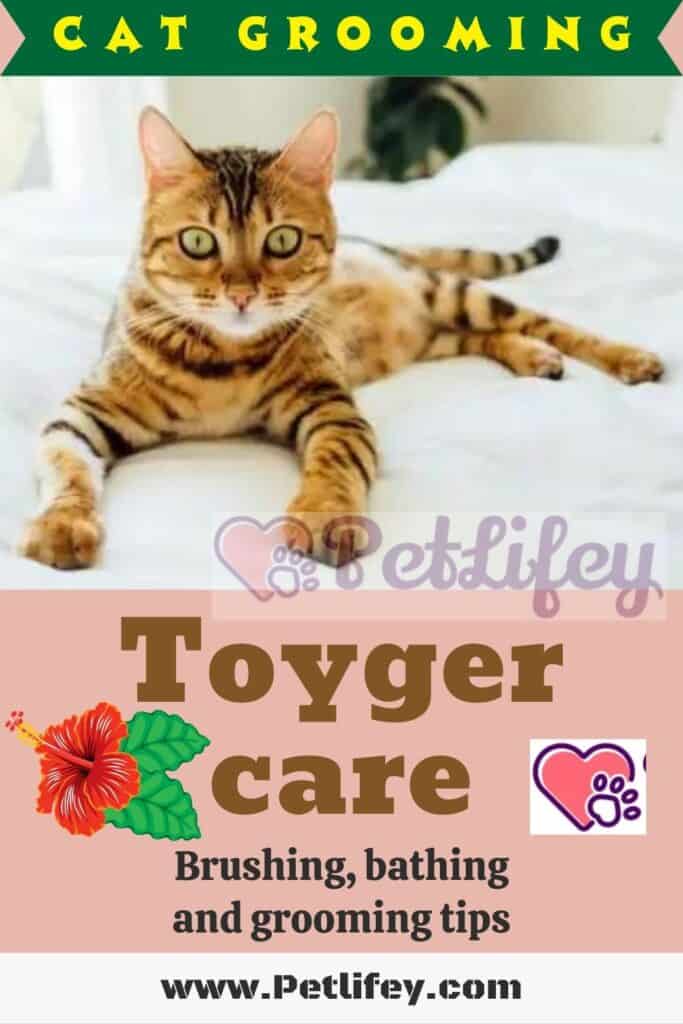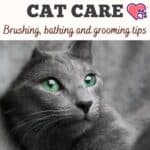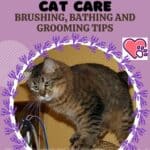Here is the complete list of precautions to be put into practice to take care of the Toyger’s beauty and well-being to the fullest.

Dedicating yourself to the care of your pet is not a mere aesthetic question: in fact, his health and serenity also strictly depend on the attention and daily hygiene practices to which we subject our Toyger. Here’s what to know about it.
Toyger’s coat care
The Toyger’s care passes inevitably to the attention reserved to its splendid coat, incredibly similar to that of a tiger.
Being a short-haired cat, this furry cat doesn’t need to be brushed on a daily basis.
In fact, this operation can be carried out 2-3 times a week,
The ideal tool is a brush with large, soft bristle. The advice is to proceed both in the direction in which the coat grows and against the grain.
In this way, we will be able to eliminate the presence of knots, reduce the formation of hairballs and identify any parasitic infestations.
Of course, we will have to take care to regularly apply the pesticide to the Toyger , avoiding the presence of fleas and ticks.
Does the cat need to bathe?
Many pet cat owners wonder if it is necessary to wash their cat.
The answer is: basically no. In fact, the Toyger independently takes care of his personal hygiene, dedicating much of the time to cleaning his coat.
However, in the case of sick, elderly cats or those returning from periods of convalescence, bathing the cat could prove to be indispensable.
In this case, the following precautions must be put into practice:
- The choice of cleansers, which should be specifically formulated for the feline’s skin and coat. For a truly shiny coat, we can also apply cat conditioner. In any case, great importance falls on the cat’s diet. In fact, the main secret for a thick, silky and shiny fur lies in the Toyger’s diet.
- The water temperature, which should be lukewarm;
- The times of the operation, which should be short to avoid stressing the animal;
- The drying, which should be complete, to avoid the risk of diseases such as cough and fever. Pay attention to the use of the hairdryer: this tool should only be used if the cat is not frightened by its sound.
Toyger’s teeth, eyes and ears care

Of course, taking good care of the Toyger also involves taking care of the daily cleaning of the cat’s teeth, eyes and ears.
Regularly taking care of the pet’s oral hygiene is essential to avert the risk of diseases such as gingivitis, stomatitis and periodontitis.
How to reduce the accumulation of plaque and bacteria? First of all, starting with nutrition. In fact, there are croquettes specially formulated to remove food residue from the cat’s teeth.
Furthermore, the advice is to wash the cat’s teeth daily, using special toothpastes and toothbrushes (and never tools designed for human use).
Does the animal seem to dislike this procedure? Don’t worry: you can try sanitizing spreads, to be distributed on the feline’s teeth.
This is a simpler operation, because in most cases these products are flavored with a taste that the four-legged friend likes.
No less important is the inspection of the eyes and ears, to eliminate any accumulations of secretions, which if not removed could cause the onset of infections.
In this case, it is sufficient to use a sterile gauze soaked in warm water.
To cut the nails to the cat yes or no?
Finally, we just have to answer one last question about Toyger care: is it necessary to cut the cat’s nails?
In reality, there is no single answer but a lot depends on the individual case.
In fact, if your four-legged friend is elderly and leads a sedentary lifestyle, he may no longer shorten his claws by himself.
In this case, therefore, it is essential to trim the furry dog’s nails, which could hinder him in his movements, as well as cause damage to people and objects in the house.
How to do? There are special nail clippers on the market. First of all, you need to put pressure on the Toyger’s paw, so that the claws fully come out.
After that, just remove the outermost portion of the nail . To locate it, focus on the lighter color than the rest of the claw.
In fact, it is the non-vascularized part. Never overdo it: we would risk cutting too deeply causing a loss of blood in the cat.






